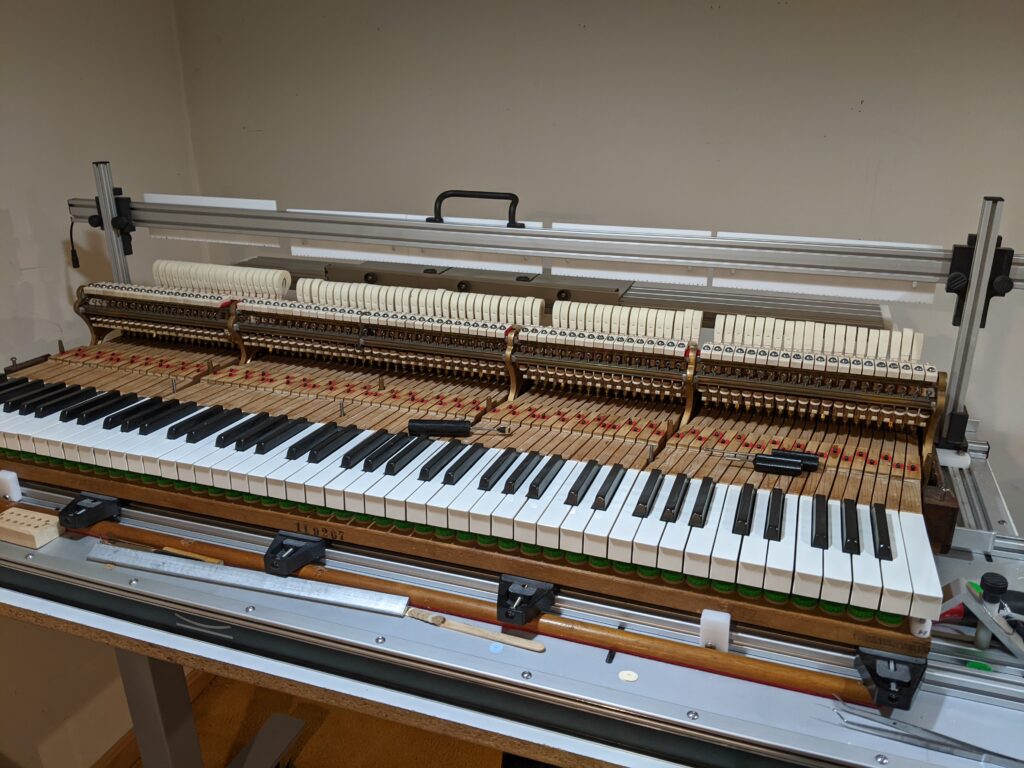
State of the art equipment allows more accurate, refined adjustments in less time.
Action regulating on a grand piano refers to the meticulous process of adjusting the various mechanical components of the piano’s action to ensure optimal performance and responsiveness. The action of a grand piano includes parts like the keys, hammers, dampers, and various levers and springs, all working together to produce sound when a key is pressed.
Regulating involves a series of precise adjustments, such as:
- Key height and dip: Ensuring the keys are at the correct height and travel distance when pressed.
- Hammer blow distance: Adjusting the distance the hammers travel to the strings.
- Let-off and drop: Fine-tuning the point at which the hammer disengages from the key and the distance it falls back.
- Jack position and height: The proper setting reduces the friction at the point of escapement and allows for quick return of the jack to its rest position, facilitating repetition.
- Repetition lever: Adjusting the mechanism that allows for rapid note repetition.
- Alignment: Carefully adjusting the alignment of hammers to strings to deliver maximum power and facilitate proper Una Corda pedal operation.
- Consistency: Proper regulation ensures that each key responds uniformly, providing a consistent touch and feel across the entire keyboard. This consistency is vital for pianists to execute precise and accurate performances.
- Dynamic Control: Well-regulated action allows for a wide range of dynamic expression, from soft pianissimos to powerful fortissimos. This control enables pianists to convey emotion and nuance in their playing.
- Repetition Speed: Regulating the action ensures that the repetition mechanism works efficiently, allowing for rapid note repetitions without sticking or sluggishness. This capability is essential for playing fast passages and intricate pieces.
- Touch Sensitivity: Proper regulation enhances the touch sensitivity of the keys, enabling pianists to control the volume and tone of each note with subtle variations in finger pressure. This sensitivity is crucial for achieving musicality and expressiveness.
- Preventing Wear and Tear: Regular regulation helps maintain the health of the piano’s internal components, reducing wear and tear on the action parts. This maintenance prolongs the life of the piano and ensures it remains in optimal playing condition.
Action regulation is crucial for piano performance because it directly impacts the instrument’s responsiveness, touch, and overall playability. Here are some key reasons why it matters:
Overall, action regulation is like fine-tuning a high-performance vehicle: it ensures that every part works harmoniously, allowing the pianist to focus on their artistry without being hindered by mechanical issues.
